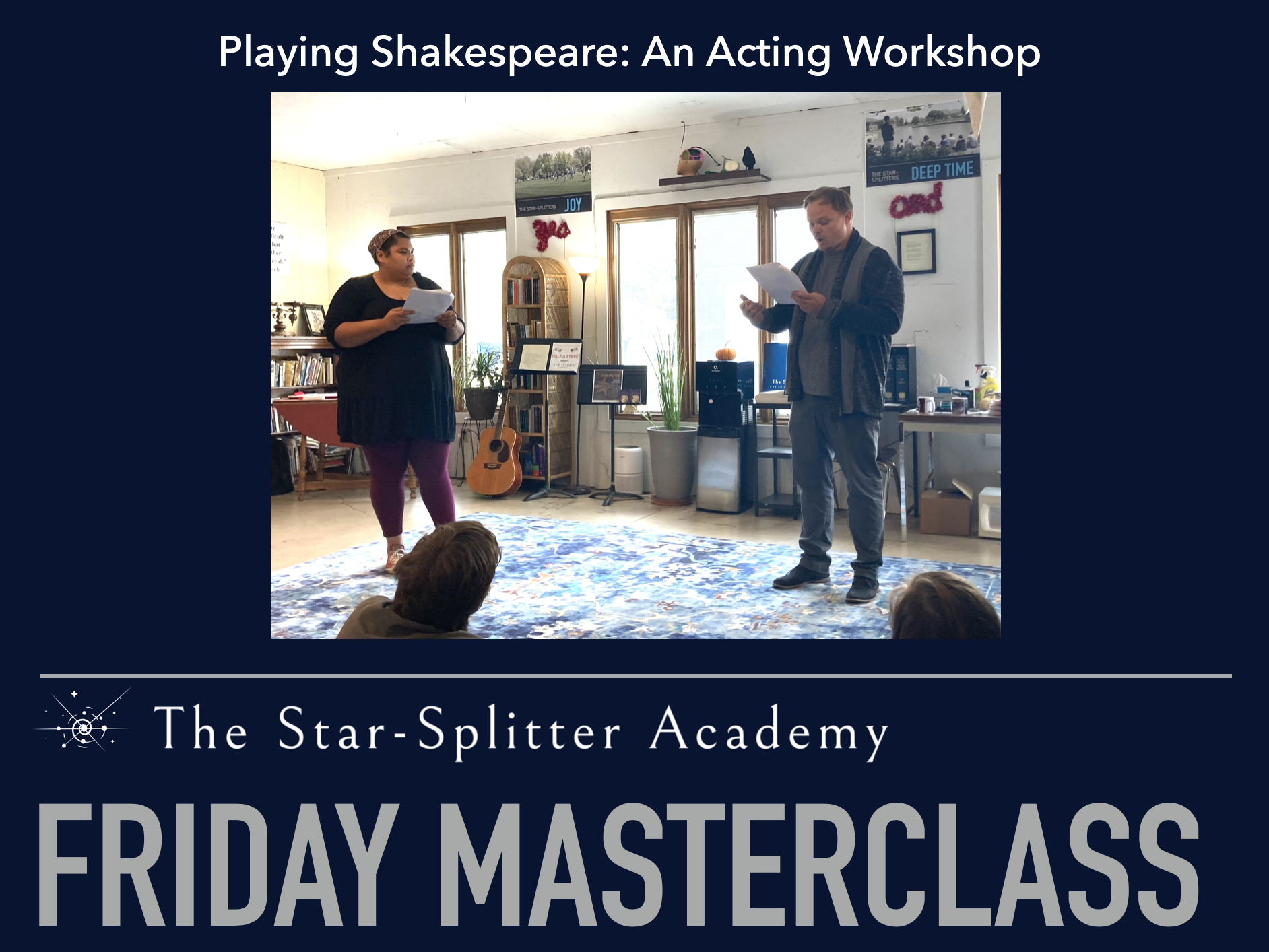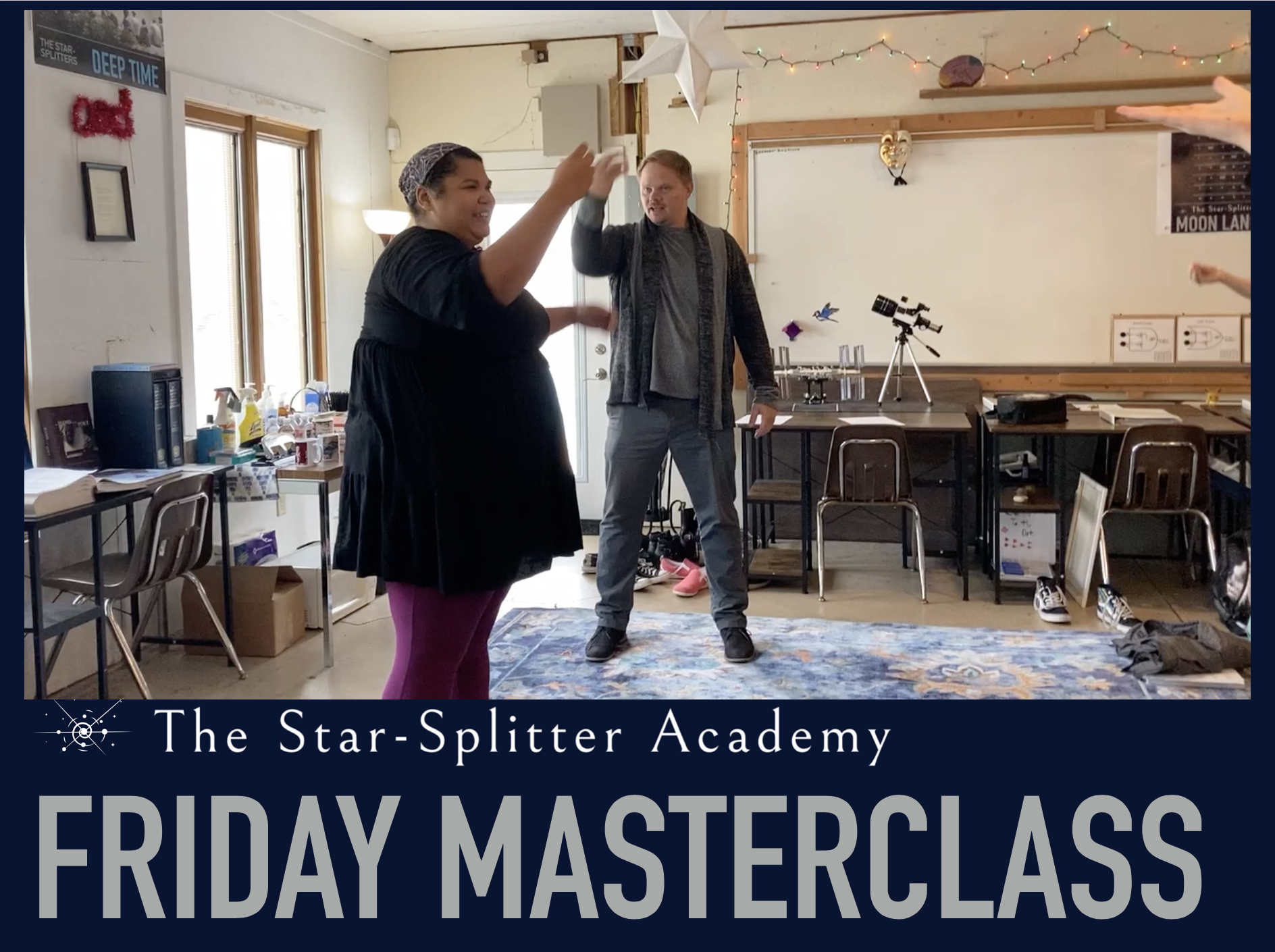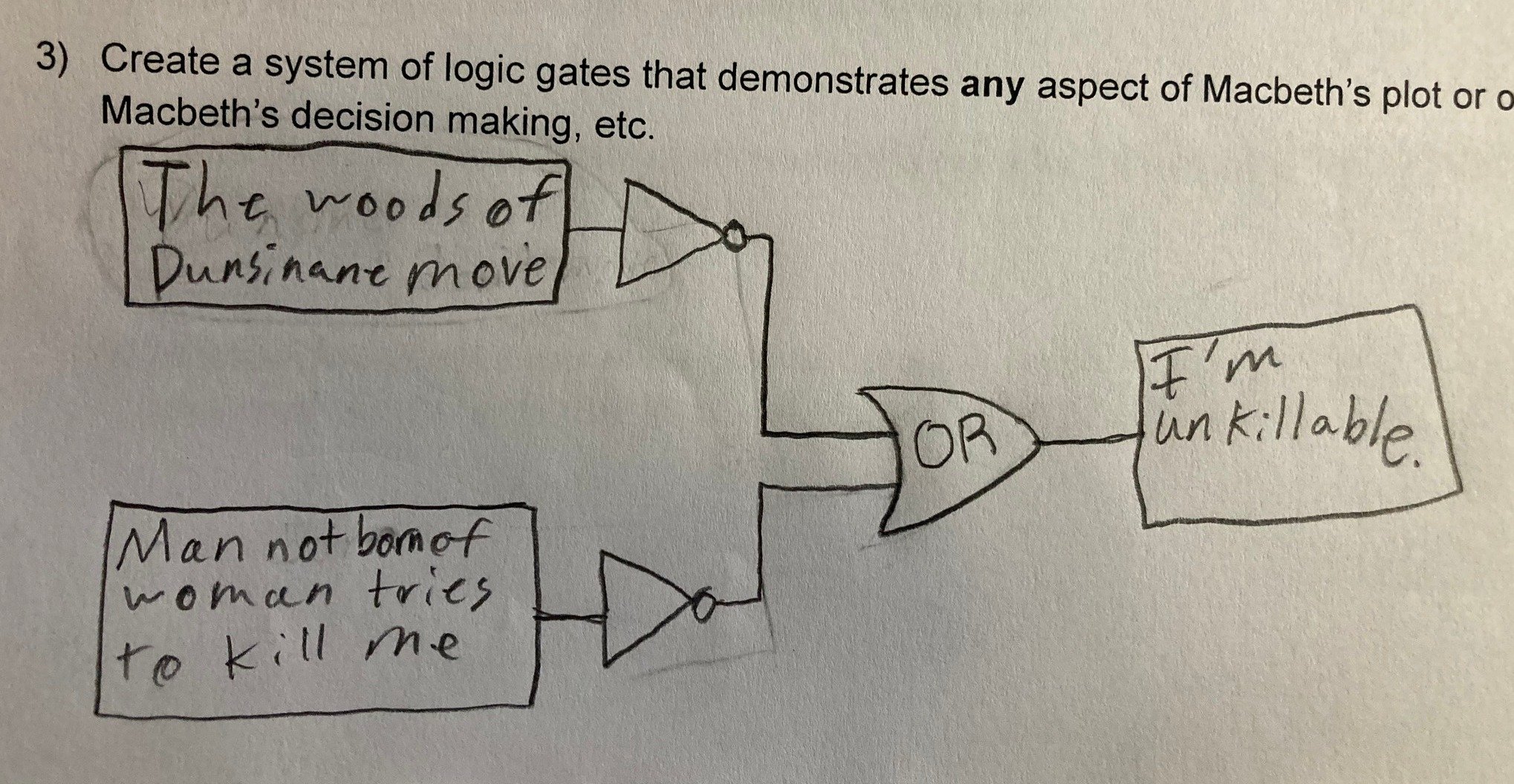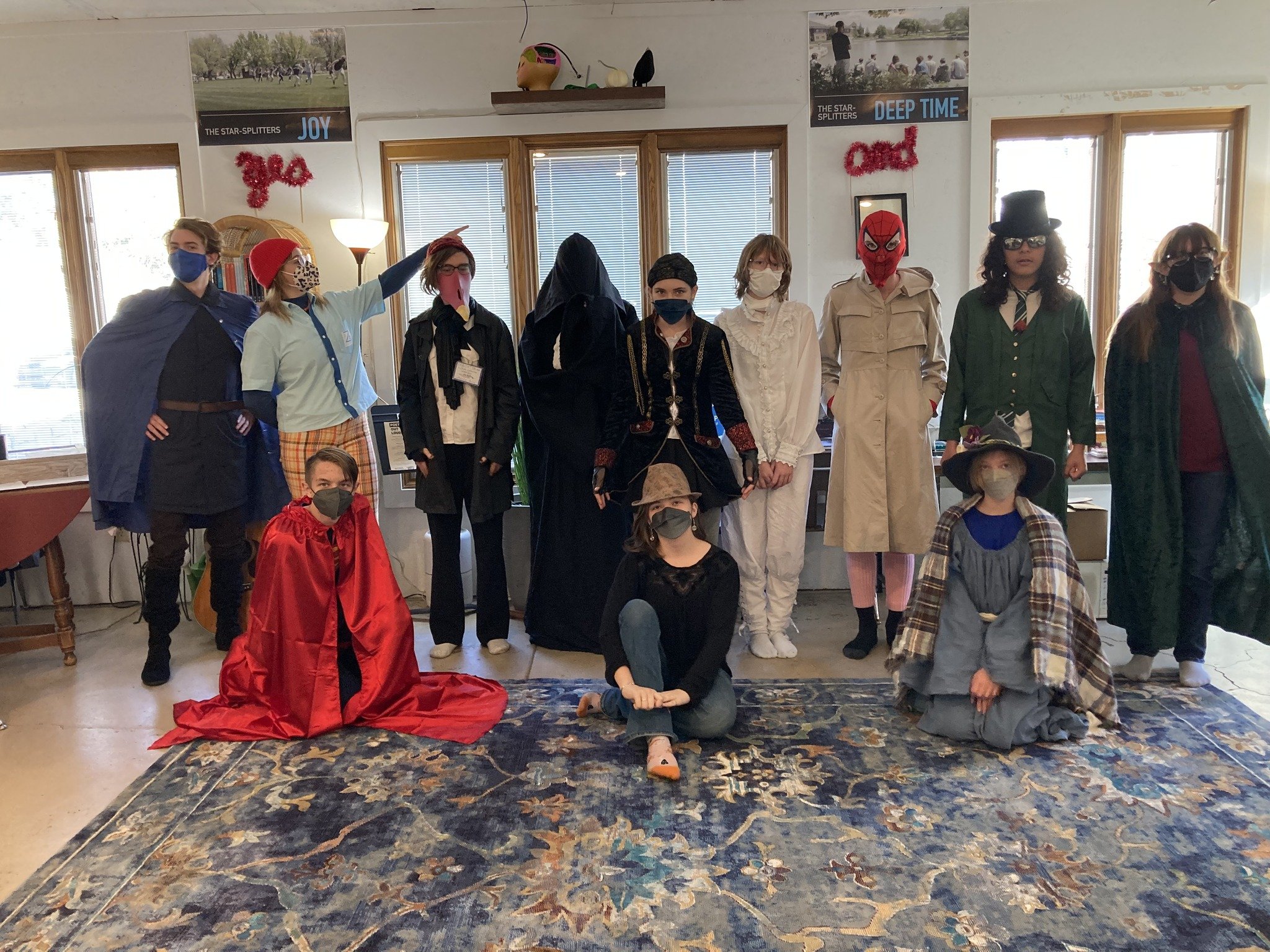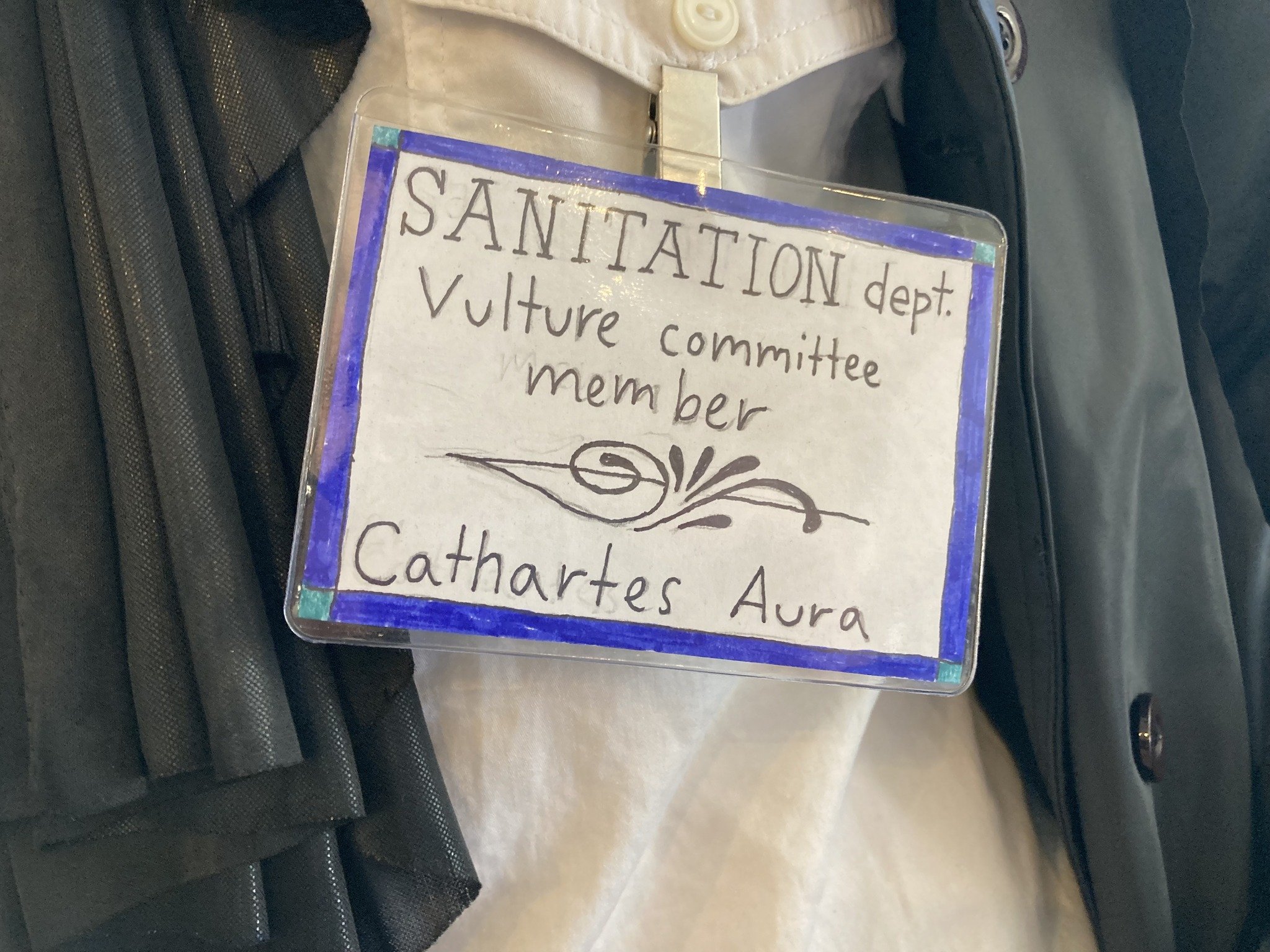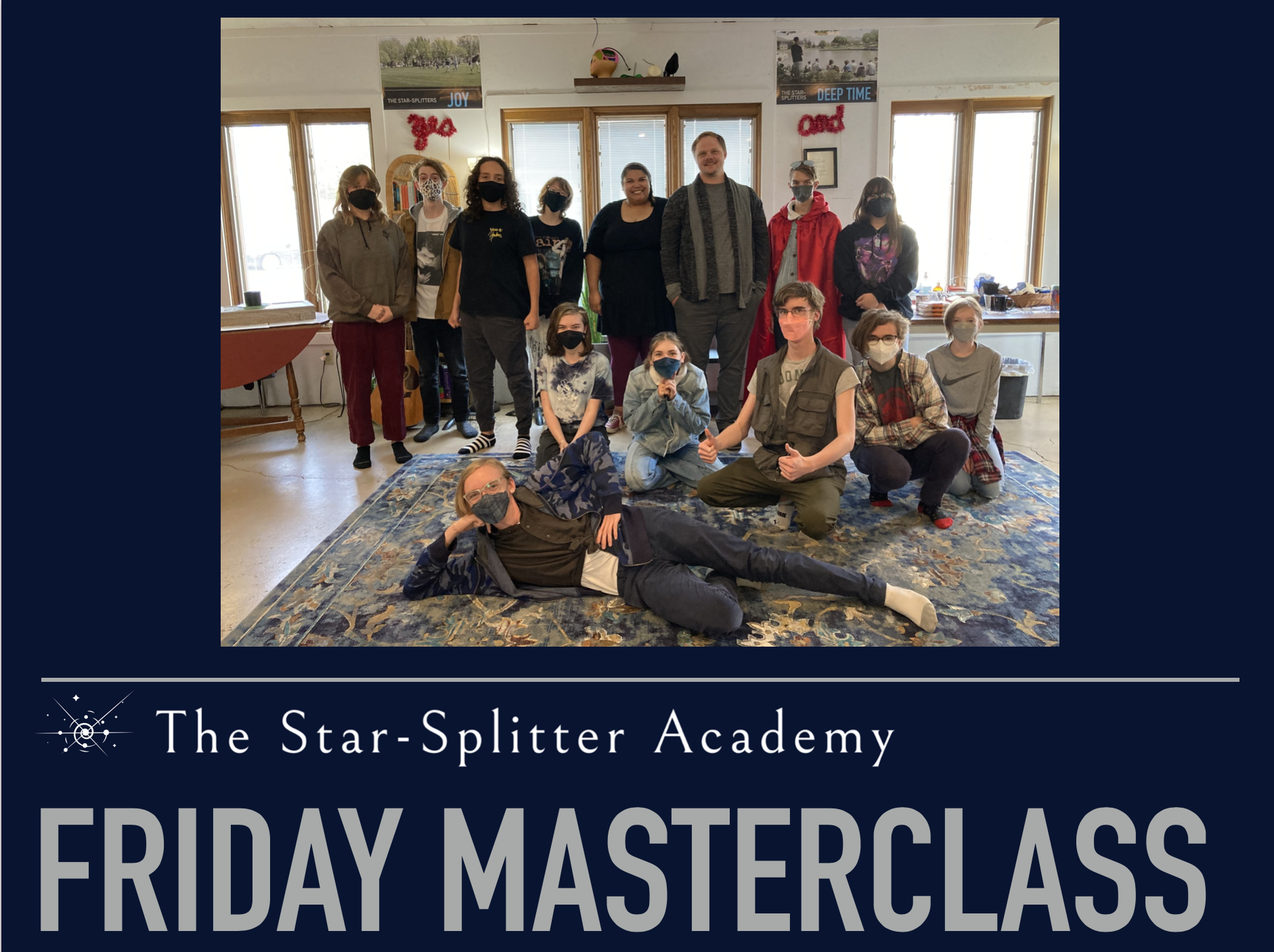Shakespeare's Phoropter: Seeing Macbeth
Using an optometrist's phoropter as our central metaphor, The Star-Splitters learned how to look closely at a text (Macbeth) through a host of clarifying lenses in order to discover a wider range of meaning.
From rhythm to imagery, figures of speech to symbolism, theories of comedy to the neuroscience of sleep, a range of cultural associations to a nexus of historical forces such as the Gunpowder Plot, each set of lenses allowed us to more fully inhabit the play's richly imagined emotional, intellectual, cultural, moral, and political landscapes.
We read the work out loud and slowly, feeling every rhythmic jar, hearing every echo as words and images reverberated from character to character. We watched birds fly through the language's landscape.
To help us learn to feel the meaningful rhythms of the play, we memorized Coleridge's poem "Metrical Feet" as well as the opening lines of Alexander Pope's artfully onomatopoeic "An Essay on Criticism." We also shared techniques to aid in the process of memorization, such as Tori’s sharing her practice of writing out the texts using color-coding to link rhyming sounds.
We learned about a neurological study that explored the effects of Shakespeare's wordplay on the brain, and about a linguistic study that discovered how the unusual frequency of the definite article within the play helps to create the work's eerie atmosphere, a dissociative effect that we then saw translated into the visual vocabulary of the Coen brothers’ movie version of the play. We compared four film versions of the play, noting and discussing the myriad ways Shakespeare's texts can be interpreted.
To further aid that understanding, three special guests joined us as part of our year-long series of Star-Splitter Master Classes.
Award-winning actors Darian Leatherman and Quinn Warren led us in a two-hour exploration of Shakespeare, beginning with Darian teaching us the "Vowel Resonance Ladder" technique that's designed to connect text to voice and voice to body so that an actor can more fully inhabit a character's language. She and Quinn then shared how each of them prepares for performance, including the textual work involved (which mapped onto much of the analytical textual work the students had done in class).
Quinn underscored the vital importance of listening ("If you're really listening, it's almost impossible to break character," he told us), a statement that chimed with what we practice in class in terms of active listening to one another's points of view, both in class discussions and in improv scenes.
Then Quinn and Darian performed a scene from Macbeth, after which they had a conversation with the students about their interpretation, discovered new perspectives with them, then performed the scene again, incorporating what they had learned.
One week prior to Darian and Quinn's visit, Equity actor Brian Gunter joined us to share his expertise. A Seattle-based performer, Brian was back in the area to be part of the cast of Hank Williams: Lost Highway at the New Theatre in Overland Park.
Brian performed Macbeth's Act 1, scene 7 soliloquy ("If it were done when ’tis done, then ’twere well / It were done quickly"), deliberately physicalizing every action conveyed by the language's imagery so that we could better see the character's struggle. He spoke of the actor's constant work to find their way to truth in performance, moments of true connection to the material. He then talked about the importance of memorizing poetry, then recited Poe's "The Raven" and taught us "To Make a Prairie" by Emily Dickinson (a work Hadley then animated—see below).
As always, throughout the deep-dive, students were learning how to learn and how to organize their thoughts into durable forms. They kept well ordered binders, with sections corresponding to the different "lenses" through which we viewed Shakespeare, his work, and his time.
And, as always, The Star-Splitters exercised their understanding in ways that blended analysis and creativity. When studying metrical feet and poetic form, for example, Juan led us in a guessing game about his middle name, offering the following as a clue (experty utilizing the terms we'd just learned): "The form of the 'line' created by my full name is anapestic trimeter with a spondaic substitution in the first position and with a feminine ending."
On the final, open-outline, open-book test, students wrote well structured and supported analytical paragraphs in which they identified and proved figures of speech in various examples, cited textual evidence to prove points about characters' relationships, applied to the text theories of comedy that date back to Plato and Thomas Hobbes, and made connections between the text and what Dr. Matthew Walker taught us about the science of sleep.
On the same test, students composed original lines of poetry and used logic gates to diagram aspects of Macbeth's plot.
Each morning, as always, we Woke to Wonder with guests and talks that intersected with our learning.
And on Halloween, the Star-Splitters donned costumes and sat around the “fire” to listen to three classic tales of humor and horror read by Sanda Moore Coleman: M.R. James's "A School Story," Saki's "Tobermory," and H.H. Jacobs's "The Monkey's Paw."
We then had a delightful discussion about the themes and implications of the stories. As the conversation unfolded, I was struck by how the day displayed the Star-Splitter ethos of blending creativity, joy, analysis, and connectivity: Where else, I thought to myself, but during a Star-Splitter Halloween costume day could I hear The Once-ler from The Lorax insightfully question the merits of Pierre-Simon Laplace's 1814 thought experiment about determinism and free will, or listen to a turkey vulture that works for the sanitation department point out the influences of Hindu culture on a classic American short story?
Using an optometrist's phoropter as our central metaphor, The Star-Splitters learned how to look closely at a text (Macbeth) through a host of clarifying lenses in order to discover a wider range of meaning.From rhythm to imagery, figures of speech to symbolism, theories of comedy to the neuroscience of sleep, a range of cultural associations to a nexus of historical forces such as the Gunpowder Plot, each set of lenses allowed us to more fully inhabit the play's richly imagined emotional, intellectual, cultural, moral, and political landscapes.
Award-winning actors Darian Leatherman and Quinn Warren led us in a two-hour exploration of Shakespeare.
Award-winning actors Darian Leatherman and Quinn Warren led us in a two-hour exploration of Shakespeare.
Equity actor Brian Gunter joined us as well. He performed Macbeth's Act 1, scene 7 soliloquy ("If it were done when ’tis done, then ’twere well / It were done quickly"), deliberately physicalizing every action conveyed by the language's imagery so that we could better see the character's struggle. He spoke of the actor's constant work to find their way to truth in performance, moments of true connection to the material. He then talked about the importance of memorizing poetry, then recited Poe's "The Raven" and taught us "To Make a Prairie" by Emily Dickinson (a work Hadley then animated—see below).
Brian Gunter has been an actor for over twenty-five years, performing with many regional theatres across the country, including Seattle Rep, Portland Center Stage, Cincinnati Playhouse-in-the-Park, Stages Repertory in Houston, the Alliance Theatre in Atlanta, Florida Studio Theatre, Berkeley Rep, San Jose Rep, the Goodspeed Opera House in Connecticut and Northlight Theatre in Chicago. He has also performed in Europe with Vienna's English Theatre, touring in Austria, Italy, and the Czech Republic. Currently living in Seattle, he was raised in Kansas and holds a BA in theatre from Wichita State University and an MA in theatre from Northwestern University.
Right after we read Act 2, Scene 1 of Macbeth, Oliver decided to make a meme.
For part of his graduate project, Henry combined what he'd learned in this Shakespeare deep-dive with what he'd learned in our filmmaking class by choosing four pivotal moments in Macbeth and showing how camera angles (low-angle, Dutch angle, etc.) can help reveal those moments' power dynamics and the characters' emotional states
We read Macbeth in October. On Halloween, the Star-Splitters donned costumes and sat around the “fire” to listen to three classic tales of humor and horror read by Sanda Moore Coleman: M.R. James's "A School Story," Saki's "Tobermory," and H.H. Jacobs's "The Monkey's Paw."
We then had a delightful discussion about the themes and implications of the stories. As the conversation unfolded, I was struck by how the day displayed the Star-Splitter ethos of blending creativity, joy, analysis, and connectivity: Where else, I thought to myself, but during a Star-Splitter Halloween costume day could I hear The Once-ler from The Lorax insightfully question the merits of Pierre-Simon Laplace's 1814 thought experiment about determinism and free will, or listen to a turkey vulture that works for the sanitation department point out the influences of Hindu culture on a classic American short story?
“To Make a Prairie”
For our 2023 Star-Splitter Christmas Show, Hadley created this animation of the Emily Dickinson poem that actor Brian Gunter taught us during our Shakespeare deep-dive. She also composed the score for the animation, which she performed live.


